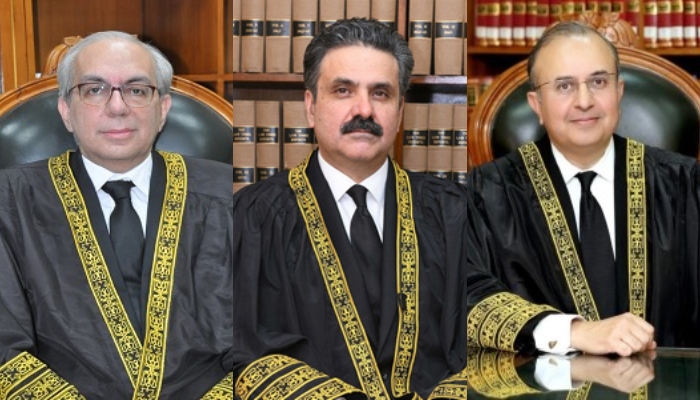
- CJP Yahya Afridi to head the keyboard.
- The committee also includes Justice Shah.
- The Supreme Judge also becomes President of the Supreme Judicial Council.
Newly appointed Chief Justice of Pakistan Yahya Afridi on Saturday reconstituted the Supreme Court Practices and Procedures Committee, bringing Justice Muneeb Akhtar back to the three-member main panel created for the purpose of resolving cases and constituting judicial panels.
This development comes hours after Justice Afridi was sworn in as the 30th Chief Justice of Pakistan earlier today, succeeding Justice Qazi Faiz Isa as Chief Justice.
According to the notification, the Chief Justice will chair the special body constituted by the Judges’ Committee under the Practice and Procedure (SC) Code, 2023. He also included junior judge Justice Mansoor Ali Shah and Justice Akhtar in the Judges’ Committee.
On September 20, President Asif Ali Zardari approved the Supreme Court (Practice and Procedure) Amendment Act, 2024, which allows the PJD to choose any Supreme Court judge as the third member of the bench.
Soon after the President’s approval, Isa, who was then the PJD chief, exercised his powers under the amended law and appointed Justice Aminuddin Khan to the Judicial Committee, replacing Justice Akhtar.
The decree, which was issued in September this year, gives the President of the Supreme Court the power to nominate a judge of his choice to the committee that constitutes the judicial bodies. Under the decree, the body will consist of the president of the Supreme Court, senior officials, and any judge nominated by the Justice and Development Party.
After the dismissal of Justice Akhtar, Justice Shah wrote a letter to the Secretary of the Supreme Court, expressing his concern over the ordinance.
In his letter, Justice Mansoor pointed out that no reasons were given behind the removal of the second most senior judge, Justice Akhtar, from forming the committee. “Furthermore, no reasons were given for ignoring the next senior judge, instead, the fourth most senior judge was nominated as a member of the panel.”
“Such unfortunate cherry-picking and undemocratic display of individual showmanship is precisely what the law attempted to discourage and replace the position upheld by the Full Bench of this Court in the Raja Amer case,” he wrote.
Justice Shah also declined to become a bench member, stating that he was unable to participate on the bench due to his concerns about amendments to the Code of Practice through an ordinance.
In his letter dated October 23, the senior judge made his participation in the special body conditional, saying it was “until the full bench determines the constitutional validity of the issuance of the decree as well as the amendments introduced by it or the judges of the Supreme Court.” The Supreme Court decided to act on these amendments in a full court meeting until their constitutionality is decided, or the previous committee, which includes the Supreme Court of Justice and two senior judges, is restored. I will not participate in the special seats formed by the new committee and will only attend regular court sessions to hear the litigants’ cases. Ordinary people in the broader public interest.
Responding to Justice Shah’s letter, Isa, who was then CJP, said that legally he could not be asked why he nominated a judge as the third member of the committee. However, the then Chief Justice gave reasons for his action, saying he did so because he had “always stood for accountability and transparency.”
Moreover, the Supreme Judicial Council (SJC) was also reconstituted and CJP Afridi became the Chairman. Earlier, the newly appointed senior judge was not part of the Supreme Judicial Council.
The council also includes Justice Mansoor, Justice Akhtar and chief justices of the high courts.
